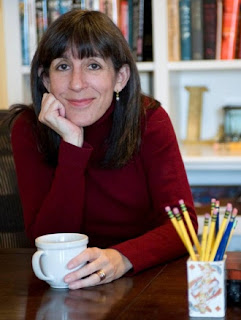Like a lot of other avid readers, I can’t resist at least taking a look at any book whose title includes the words “book” or “bookstore.” Sometimes even the word “library” does the trick. But as many times as not, I find that the plot doesn’t really interest me enough to read them, or I do read them and end up wishing I hadn’t. I’m happy to report that neither of those things happened with Liam Callanan’s 2018 novel Paris by the Book. This one, about an American woman and her two daughters who buy a failing Paris bookstore pushed all the right buttons, but there’s a lot more going on here than button-pushing.
Leah Eady’s husband Robert writes children books, just not as many as he used to write. And these days Robert is taking way more writer’s breaks than he used to take, breaks during which he disappears from home for two or three days at a time. Robert uses the time to hole up in some quiet spot where he labors to turn out a more few pages toward his next book. Leah may not particularly like the idea, but by now she’s used to it. So when Robert disappears again she is not all that concerned at first; that comes later, after her husband has been missing for an entire week.
Before he leaves, Robert often leaves little notes for his wife and daughters to find, but this time there’s nothing there – at least it seems that way. But then Leah uncovers tickets to Paris for herself and her daughters, and she wonders if the tickets might somehow be tied to Robert’s absence. She decides to take her children to Paris to see if they might find Robert there waiting for them – but he isn’t. What turns up instead is a partially completed novel that Robert has apparently been working on without her knowledge, a story set in a Paris bookstore owned by a family that sounds very much like hers. A close study of the partial manuscript leads Leah and her two girls to a small failing bookstore very much like the one in Robert’s story, so when the bookstore owner offers to sell the store to Leah she does what she thinks her husband wants her to do: she buys it. But where is he?
 |
| Liam Callanan |
Paris by the Book is all about a damaged American family in Paris, one searching desperately to find the missing piece that will make it whole again. Leah and her two girls settle into their new lives nicely, but all three of them feel as if Robert is out there somewhere watching them do it. The girls go to school and make new friends, and Leah, despite herself, is starting to feel as if she were single again. As the months go by, she begins to wonder if Robert could be dead, but she is not sure she really wants to know the truth. Perhaps that truth, whatever it is, would be even harder on the family than believing that he would walk through their bookstore’s door one day to tell them he was back.
One of the things that most surprised me about Paris by the Book is how much I learned from it about Ludwig Bemelmans’s Madeline series of children’s books and about Leah’s all-time favorite book, one by Albert Lamorisse called The Red Balloon. Ellie and Daphne share their mother’s love of The Red Balloon and are thrilled to be living in the very Parisian neighborhood in which the book is set. These girls are definitely book people, so living above a bookstore is their idea of heaven. Leah explains her girls this way:
“I have strange children. Or the world wanted me to think that way, at least when we lived in Wisconsin: my girls grew up loving to read. True, they liked milk, understood football, and were as bewitched by screens – TV screens, movie screens, and most definitely phone screens – as everyone else. But they were strange in that they loved reading above all else.”
Bottom Line: Paris by the Book is a booklover’s dream. It features a weird little English-language bookstore in the heart of Paris and some of the world’s favorite children’s books. It’s about solving the mystery of a missing man who walked away from his family one morning without saying goodbye and hasn’t been seen since. It’s about the streets of Paris and what happens in the city’s little neighborhoods after all the tourists have called it a day. And most importantly, it’s about books and how loving them can sometimes change a family’s life for the better.


































